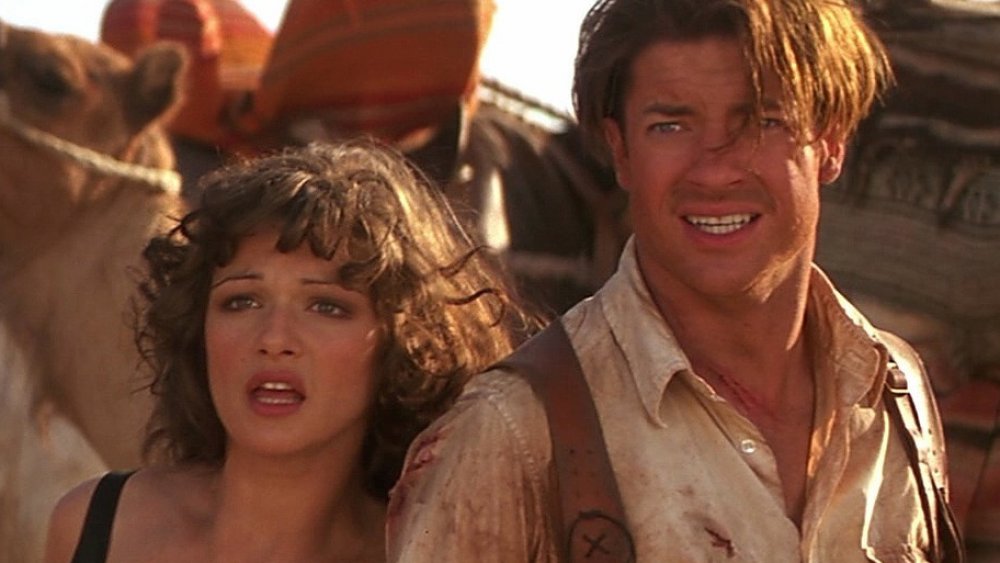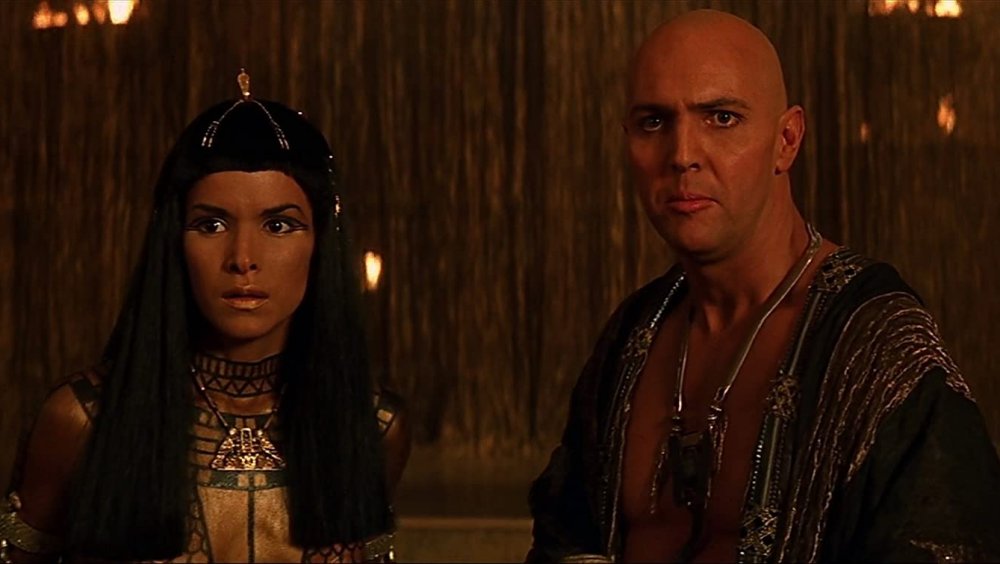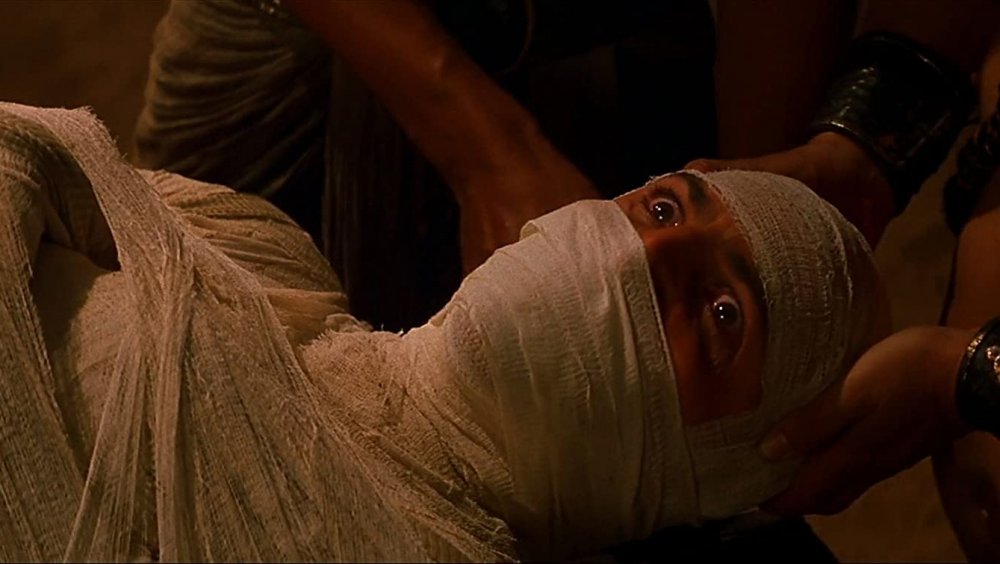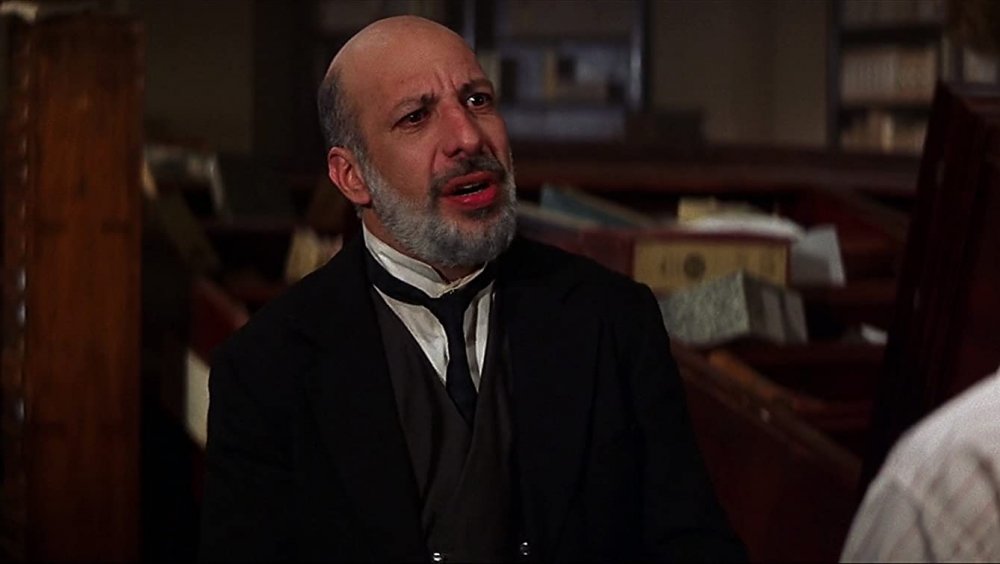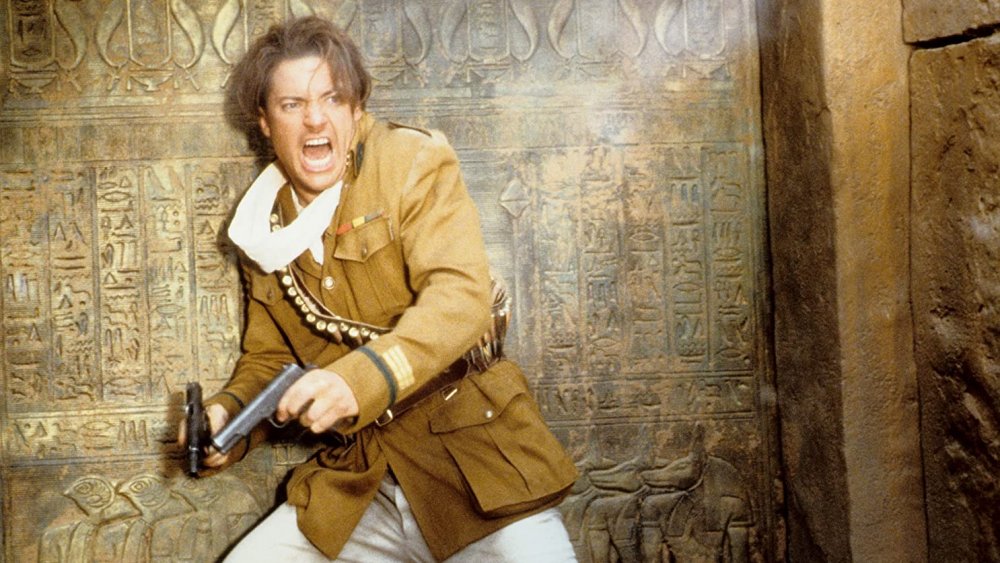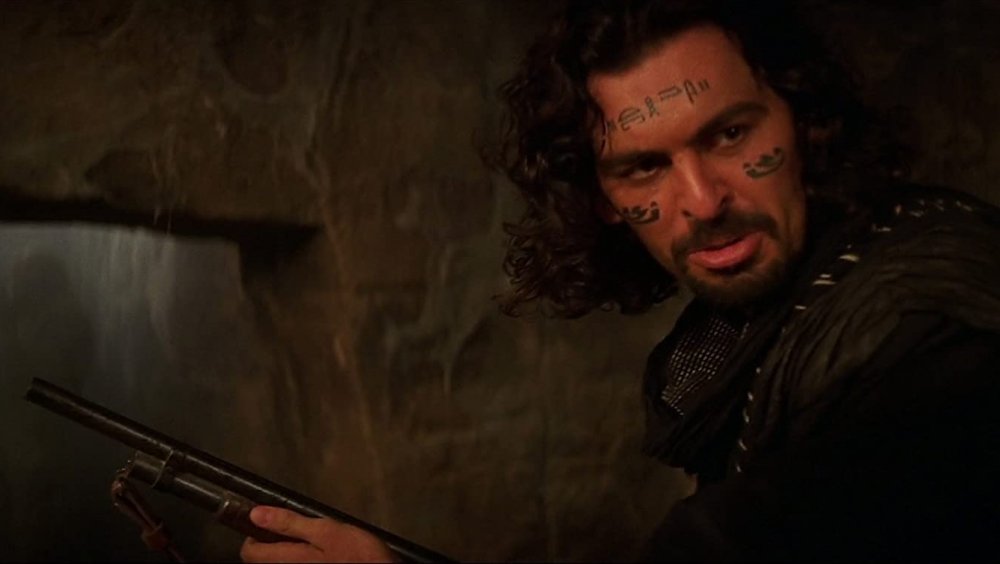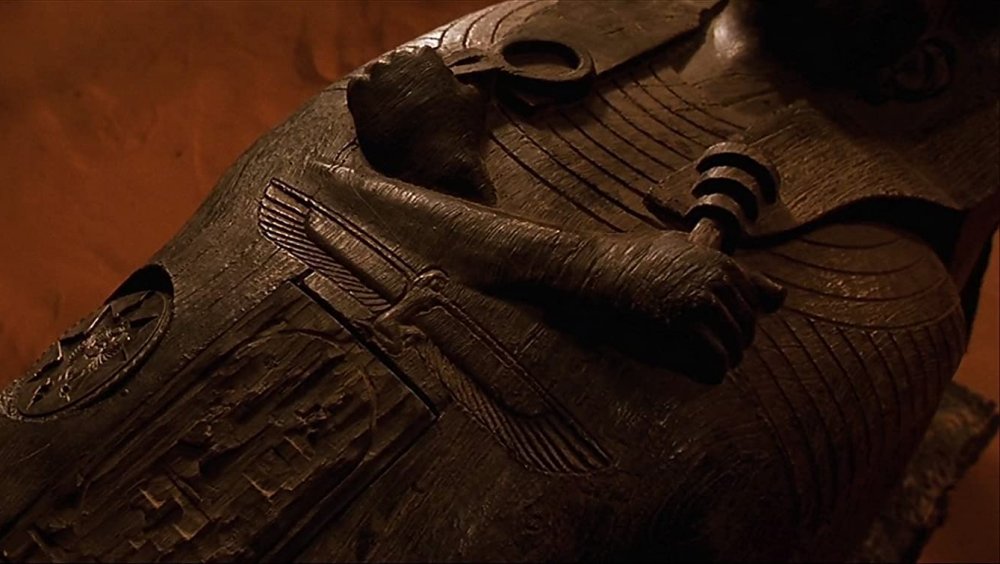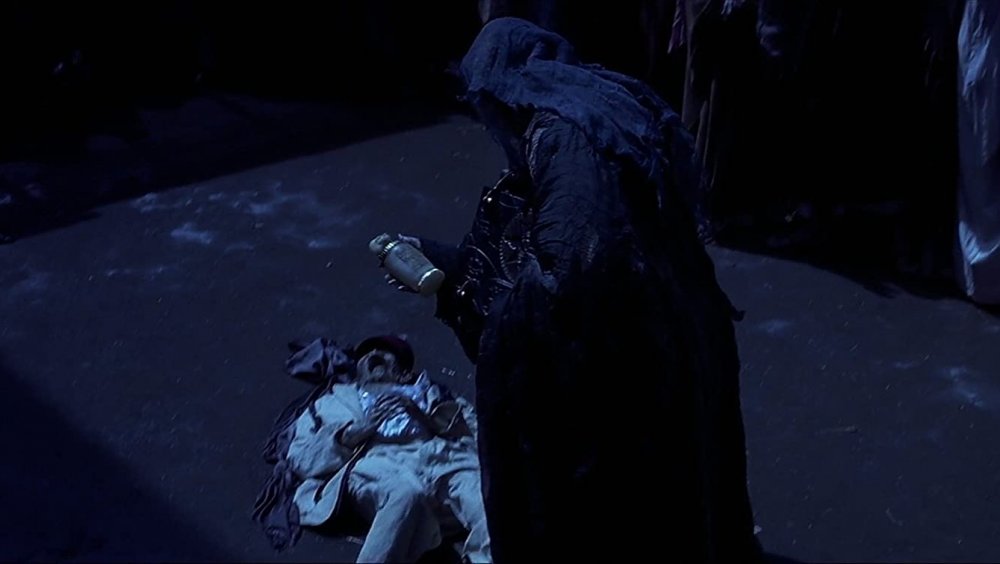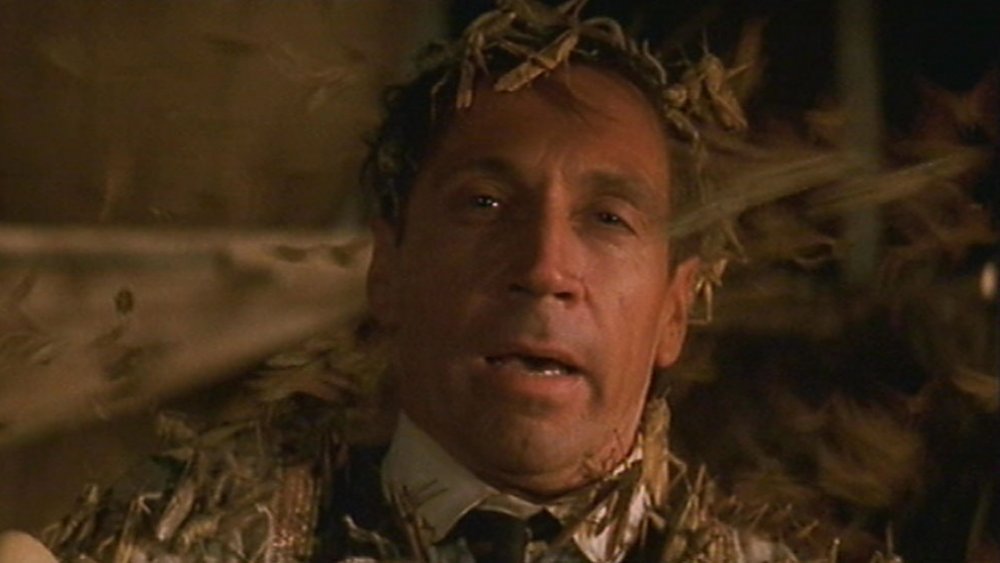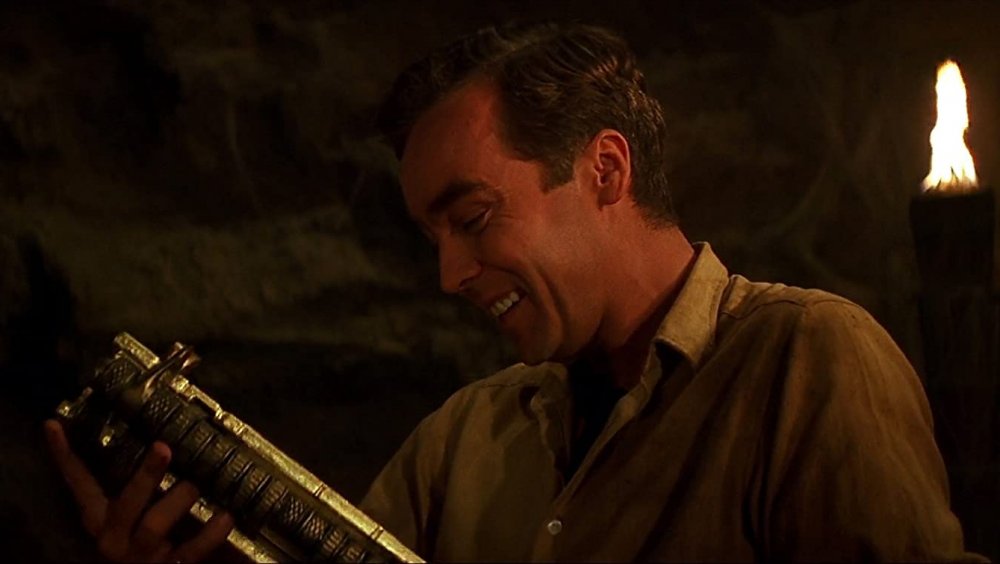Things Only Adults Notice In The Mummy
In 1999, Universal Pictures decided the time was right to revisit one of its classic monster properties, but they weren't going to make just another horror film. While the original 1932 version of The Mummy is a slow-burning creature feature, the updated film from director Stephen Sommers would be a swashbuckling period action-fantasy with horror elements and lots of comedy.
To make that work, Sommers crafted a story about an ancient city of gold, a vengeful high priest, a down-on-his-luck adventurer, a plucky librarian, and the undead curse that hangs over them all. The Mummy was a massive hit, spawning two sequels, a spinoff series with The Scorpion King, and a whole generation of crushes on its stars, Brendan Fraser and Rachel Weisz. More than 20 years after its debut, the film is still remembered fondly as a healthy dose of supernatural family fun, which means children and adults alike are still sitting down to watch it together.
Fortunately, because of its grown-up characters, themes, and complex mythology, the film also provides plenty of moments that adults will be thinking about long after the kids in the room have moved on to the next thing. These are things only adults notice in The Mummy.
The Mummy has a body paint problem
In the film's prologue, Ardeth Bay (Oded Fehr) explains through narration that Anck-Su-Namun (Patricia Velasquez) was the pharaoh's mistress, and she was therefore forbidden to be touched by any man but him. To help make this point, Anck-Su-Namun is scantily dressed and covered in an elaborate body paint design that runs across her shoulders and down her arms. When the high priest Imhotep (Arnold Vosloo) touches her in a moment of passion, he smears the paint, and that's how the pharaoh comes to learn that she's betrayed him.
Visually, it's a nice piece of shorthand to let the audience in on the moment without over-explaining it, but any adult in the room who's ever put on makeup or body paint or even a Halloween costume has to be wondering why that's the look Pharaoh settled on. Sure, it lets him know if someone touched his mistress, but she could just as easily smear the paint if she bumped into a wall or decided to lie down for a nap. Plus, there's no telling how long that whole paint job takes every morning. No wonder Anck-Su-Namun went looking for another man.
What's up with that super troubling curse?
After the death of the pharaoh and Anck-Su-Namun's suicide, Imhotep launches a plan to resurrect her that involves a forbidden ritual in the city of the dead, Hamunaptra. Unfortunately, the pharaoh's guards find out, capture him, and decide that he will be subjected to the Hom Dai, an Egyptian curse so cruel and dark that no one's ever suffered it before. After the Hom Dai, his body is buried in Hamunaptra, which is itself sunken into the desert. Then, a group of warriors called the Medjai begin their millennia-long effort to keep watch over the city because they know that if Imhotep ever returns, he has the potential to become an all-powerful being who could rule the world.
At various points in the film, both in the prologue and as Evelyn Carnahan (Weisz) conducts her research, we learn that the curse performed on Imhotep is a key reason why he could come back so powerful. The Medjai are watching over him specifically because their ancestors chose the Hom Dai, which begs the question, why did they need to use that curse if it had such devastating potential consequences? Why not just mummify him alive with the rest of his priests? It makes sense that they wanted to punish him, but this crazy curse feels like an unnecessary risk.
Those are some dangerous shelves
Though Evelyn Carnahan is the descendant of great explorers, when we first meet her, she's enthusiastically living out her life in the library of the Museum of Antiquities where she soon makes it clear that she has a certain reputation for trouble. While up on a ladder shelving books, Evie notices that one of the tomes in her hand actually belongs on the shelf behind her, and she struggles to reach for that shelf without getting off the ladder. An unfortunate balancing act follows, and eventually, Evie sends every bookcase in the library crashing to the ground.
Kids in the room see this scene and simply enjoy the moment of physical comedy, while adults in the room — especially those who own multiple bookcases — are wondering why those shelves weren't anchored to the ground. Those bookcases have priceless texts on them, and yet they're just freestanding in a circle around the library without being bolted to either the ceiling or the floor. That's a hazard for the people and the books, and while Evie's boss points out that she has a pattern of making a mess around the place, the shelves being left to tilt like that isn't her fault. In fact, it's all the more reason for her boss to spring for some new hardware.
That bit about solar navigation doesn't make much sense
After her brother, Jonathan (John Hannah), unknowingly steals a map to Hamunaptra from Rick O'Connell (Fraser), only to have Evie's boss burn part of it, Evie becomes convinced the only way to get to the legendary city is with Rick's guidance. She springs him from prison with a little bit of bribery aimed at the warden, and they head off on a race against another group seeking the hidden Egyptian city of the dead.
Of course, their journey is a more than a bit bumpy. After their riverboat catches fire, the gang takes to camels to make the rest of the trip, and then they find themselves on a desert plain looking out at the sunrise. That's when Rick points out that they have to wait for the sun to hit an exact point in the sky in order to reveal where Hamunaptra is. Once the city is revealed, it's a literal horse vs. camel race to see who can get there first.
The problem with that is perhaps Rick shouldn't need the sun to show him where the city is. He's been there before, after all, and if he knew where to stand for the sun to reveal the city, there's a good chance he could've navigated the rest of the way just going by nearby landmarks. That would've removed the need for the race, which is an admittedly fun part of the movie.
The Medjai aren't that great at their job
Over the course of The Mummy, the film lays out an elaborate mythology for the fabled city of Hamunaptra. Though many believe it's nothing but a fairy tale, various scholars have done research on it, and the film establishes for viewers that the city is both very real and very deliberately hidden. Because Imhotep's cursed body is buried there, the city is both sunken into the sand and guarded by the Medjai, who've tried to keep Hamunaptra a secret for millennia.
The problem is that, even if not everyone believes in Hamunaptra, a lot of people seem to have a fairly easy time of getting to it. A full-fledged battle erupts on the outskirts of the city near the beginning of the film, and two separate expeditions travel there three years later. Evie talks frequently about scholars who've described the layout in different ways (though they were sometimes wrong), and Rick notes that tales of Hamunaptra are so pervasive that his military unit defied orders to march to Egypt from Libya to look for it.
So, while the Medjai are certainly rather reactive once people get to Hamunaptra, maybe they should start branching out into more proactive work to keep legends of the city tamped down to begin with. It might make their job a little easier.
Adults will definitely notice this convenient plot device
Because of his transgressions when he was among the living, Imhotep suffered a particularly gruesome death when he was finally caught. The curse known as the Hom Dai meant that he had his tongue cut out, then he was wrapped in mummy linens, and then he was sealed in a sarcophagus with dozens of flesh-eating scarabs who would devour him alive.
It's a horrible way to die, and Evie, Rick, and Jonathan discover the equally horrible aftermath when they open his sarcophagus. He's not dried out like a regular mummy, his face is frozen in a horrible scream, and perhaps most horrifically, he left deep scratch marks on the inside of the sarcophagus when he desperately tried to claw his way out. He also managed to etch a message into the lid before he died: "Death is only the beginning."
While the claw marks certainly make sense as the last act of a desperate, dying man, this little message does not. For one thing, it's carved very deep into the sarcophagus, and the handwriting is actually at least somewhat neat. Plus, the scarabs have been shown to devour people in moments, so how did he even find the time? For kids, it's just a creepy message. For adults, it's a plot convenience.
Does the Mummy have bad eyesight?
While Evie, Rick, and Jonathan are unearthing Imhotep's sarcophagus, the American expedition elsewhere in Hamunaptra stumbles upon a strange chest that warns anyone who opens it that a curse will kill them all. The Americans ignore this warning, open the chest, and find both the Book of the Dead and canopic jars containing what turn out to be the organs of Anck-Su-Namun.
From there, the curse does pretty much exactly what it promised to do, as Imhotep hunts down each of the Americans and sucks them dry, using their organs to replenish his own so he can return to full strength.
This begins when Imhotep hunts down Bernard Burns (Tuc Watkins), the member of the American party who has already warned he can't see anything without his glasses. After his glasses are broken beneath the city, he stumbles blindly through the tunnels until Imhotep finds him and takes both his eyes and his tongue. It's a creepy moment, but what adults might realize that kids are too frightened to remember is that Imhotep just took the eyes of the one man in the group with bad vision. Sure, his magic can compensate for that, but still, it's funny to think of the Mummy bumping into things because he picked the wrong eyes.
The Mummy features some puzzling plagues
Though it's rooted in certain historical concepts — namely that Egyptians made mummies, placed them in tombs, and believed in various magical ideas — and it namechecks the famous pharaoh Seti I, The Mummy is still pretty firmly based in the world of fiction. It's a big, fun, fantasy-horror adventure film, which means it gets to take a lot of liberties ... including, apparently, with biblical history.
One of the warnings given by the Medjai about what would happen should Imhotep rise from the dead is that he will manifest the plagues of Egypt, and sure enough, as soon as he's back, things like swarms of locusts and fountains of blood start plaguing people. The strange thing here is that, other than Imhotep referencing "the language of the slaves" when he hears Beni (Kevin J. O'Connor) speak Hebrew, there are no real biblical references in the film, and the plagues in question were specifically drawn from the Book of Exodus. So, why does Imhotep get to use the plagues that the God of Israel specifically devised to torment the Egyptian people? We naturally associate these plagues with Egypt because of that specific Bible story, but The Mummy just makes them into generic "Egypt plagues," as though Egyptians can just access them at any time.
That's some bad book safety
There are certain very precise conditions needed to make the plot of The Mummy work, many of them stemming from ancient Egyptian rituals that the characters have to relearn and, in some cases, discover for the first time. The endgame of the film — as Evie, Rick, and Jonathan battle an all-powerful Imhotep — has a lot to do with a pair of magic books. There's the Book of the Dead, which contains forbidden spells to resurrect people, and the Book of Amun-Ra, which contains spells that do things like command the dead and render the undead mortal once again. Both of these books are presented as highly dangerous objects, each locked by a special key, that should probably never have been read from in the first place.
That makes sense, but what makes these books even more alarming is the fact that anyone who can sound out the words can basically do whatever magic is written there. Near the end of the film, Jonathan gets hold of the book of Amun-Ra and manages to command a group of mummy soldiers just by reading an inscription that's on the cover. Sure, these books were probably kept locked up tight back in the day, but it's still possible some kids could've gotten hold of them and woke up some mummies in ancient Egypt one night. It's not the most secure magic system in the world.
